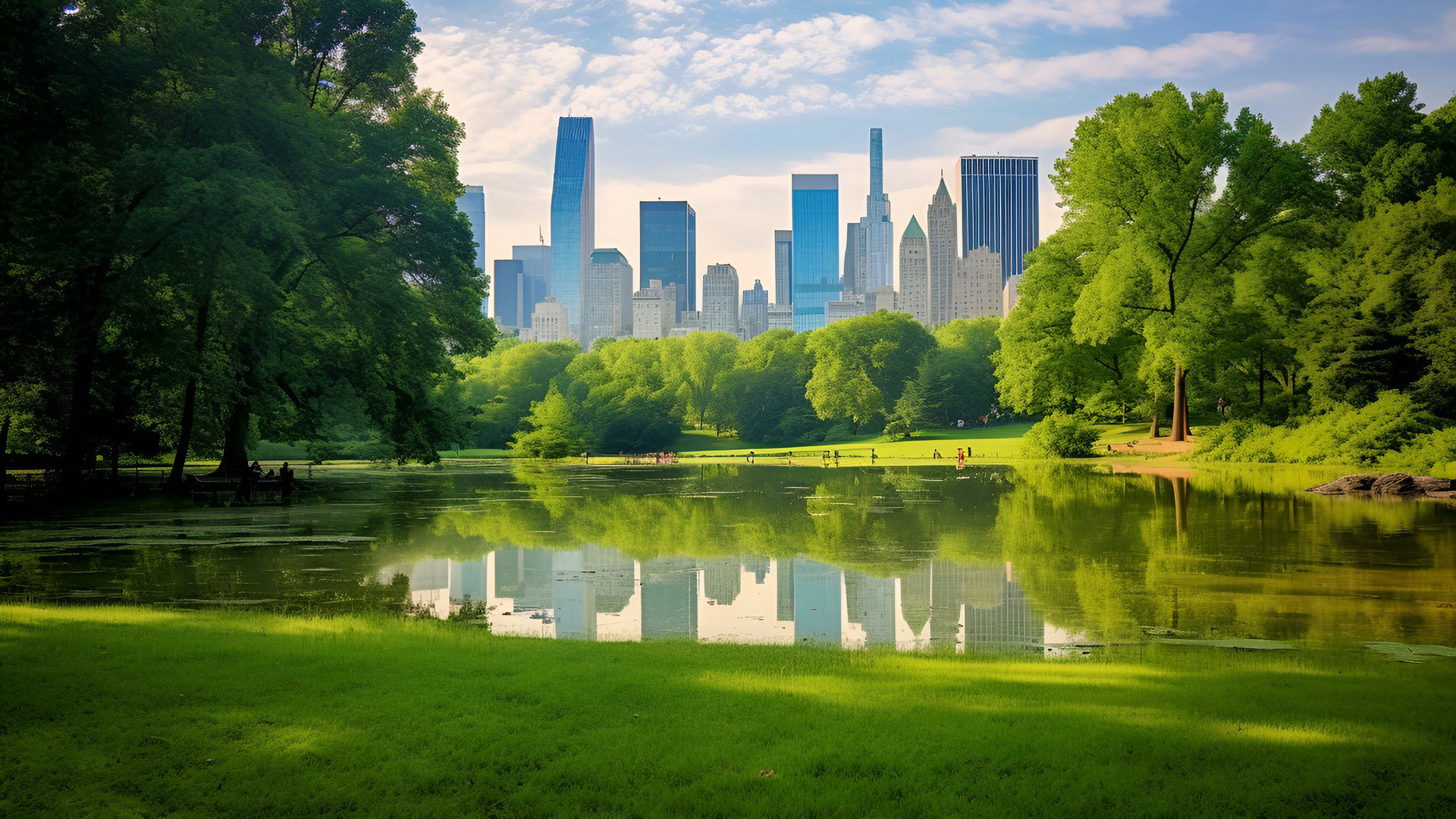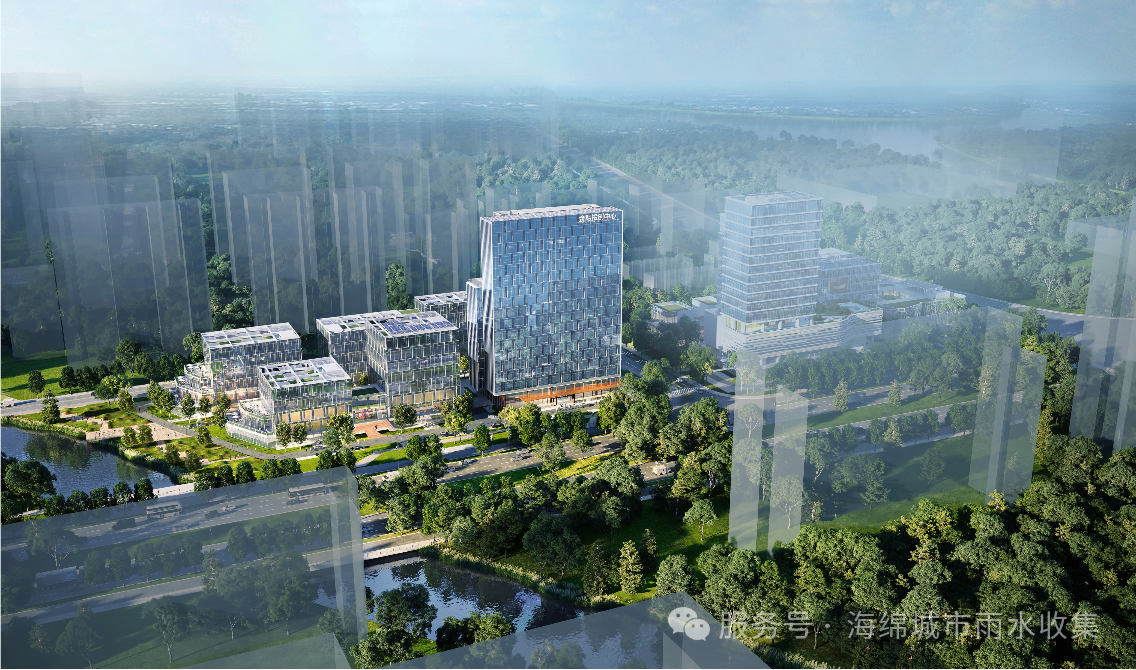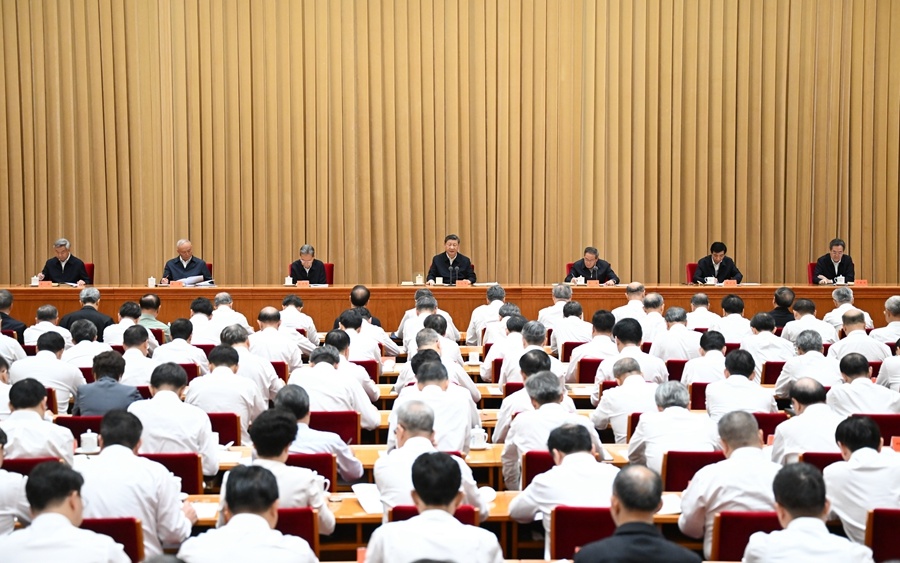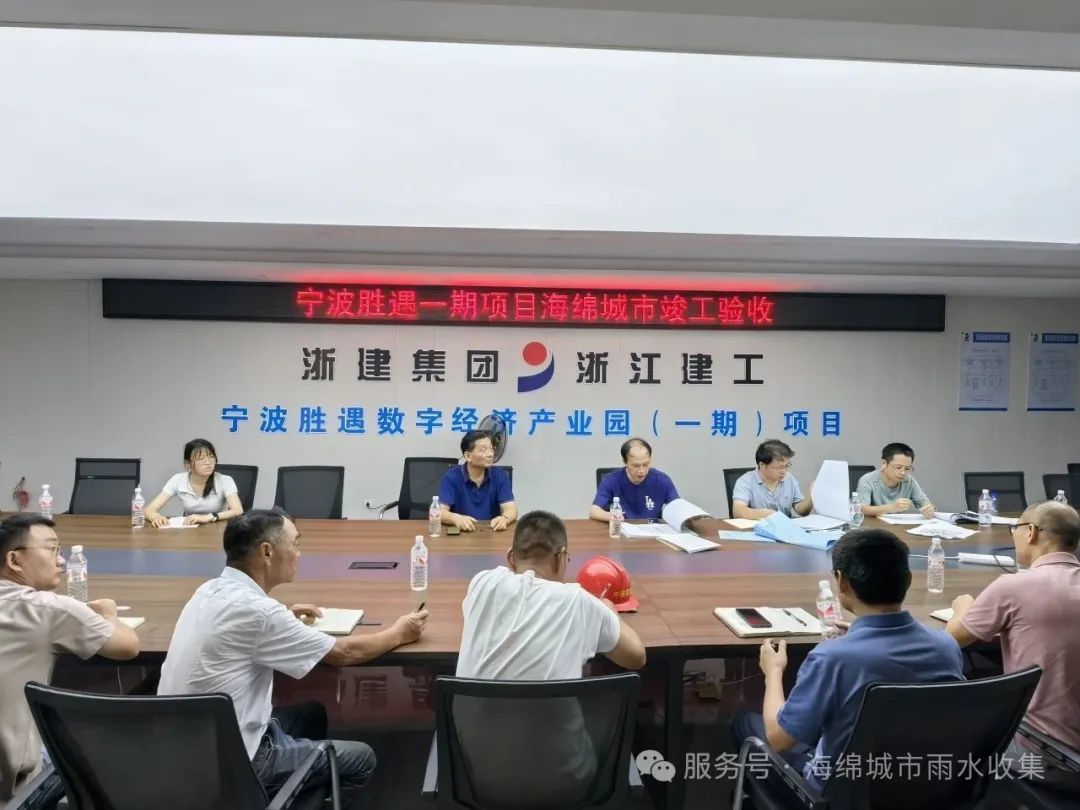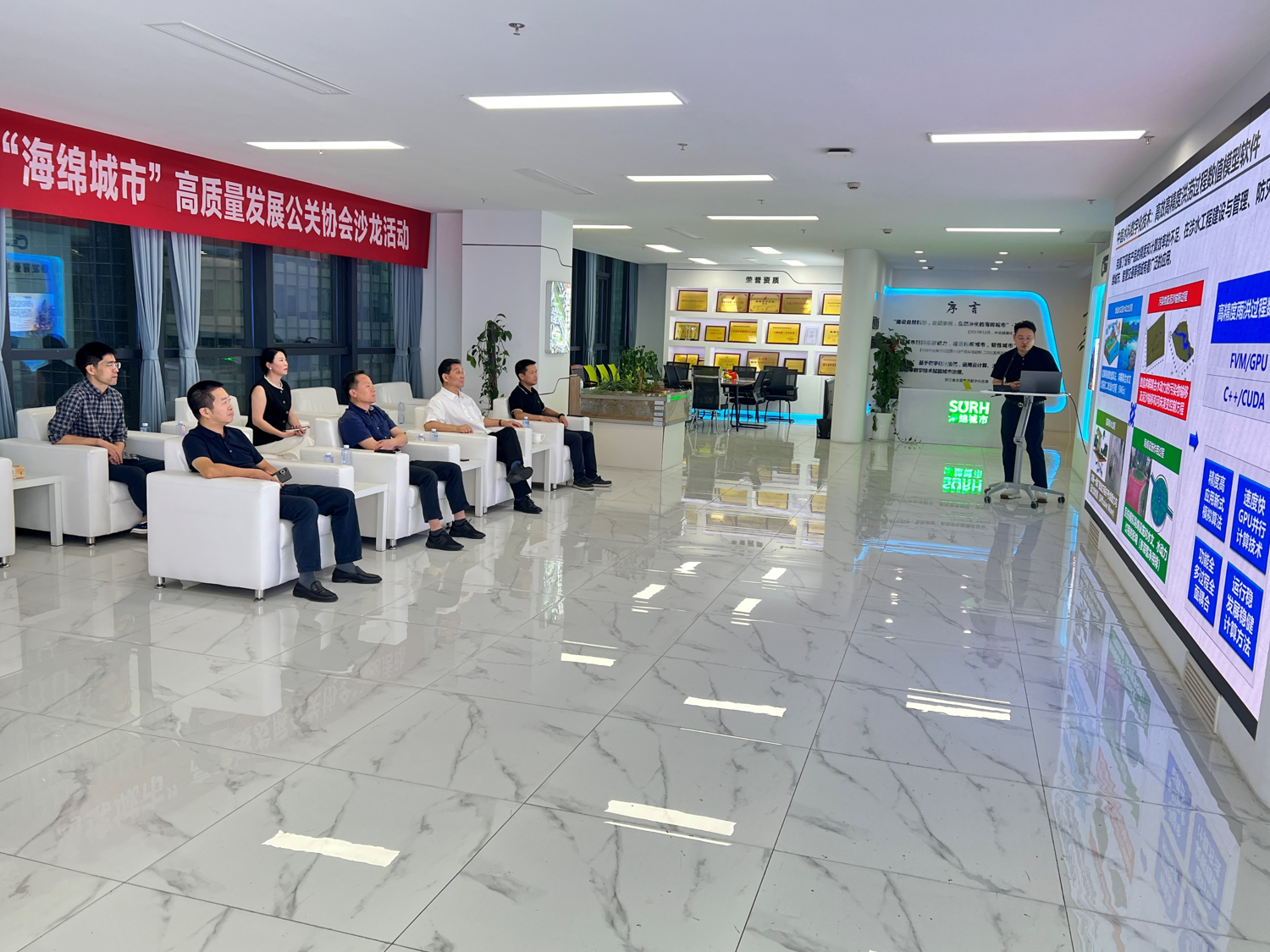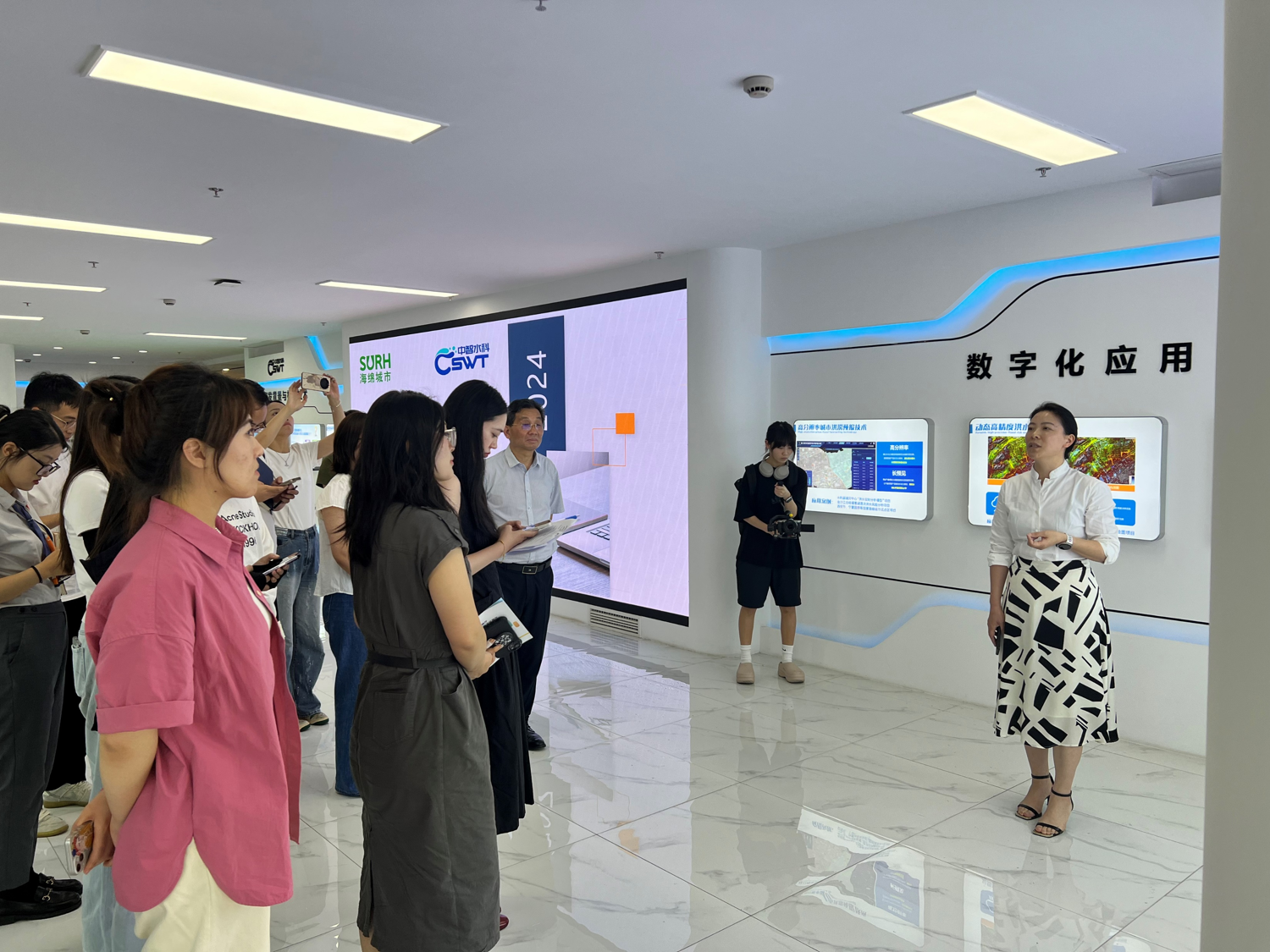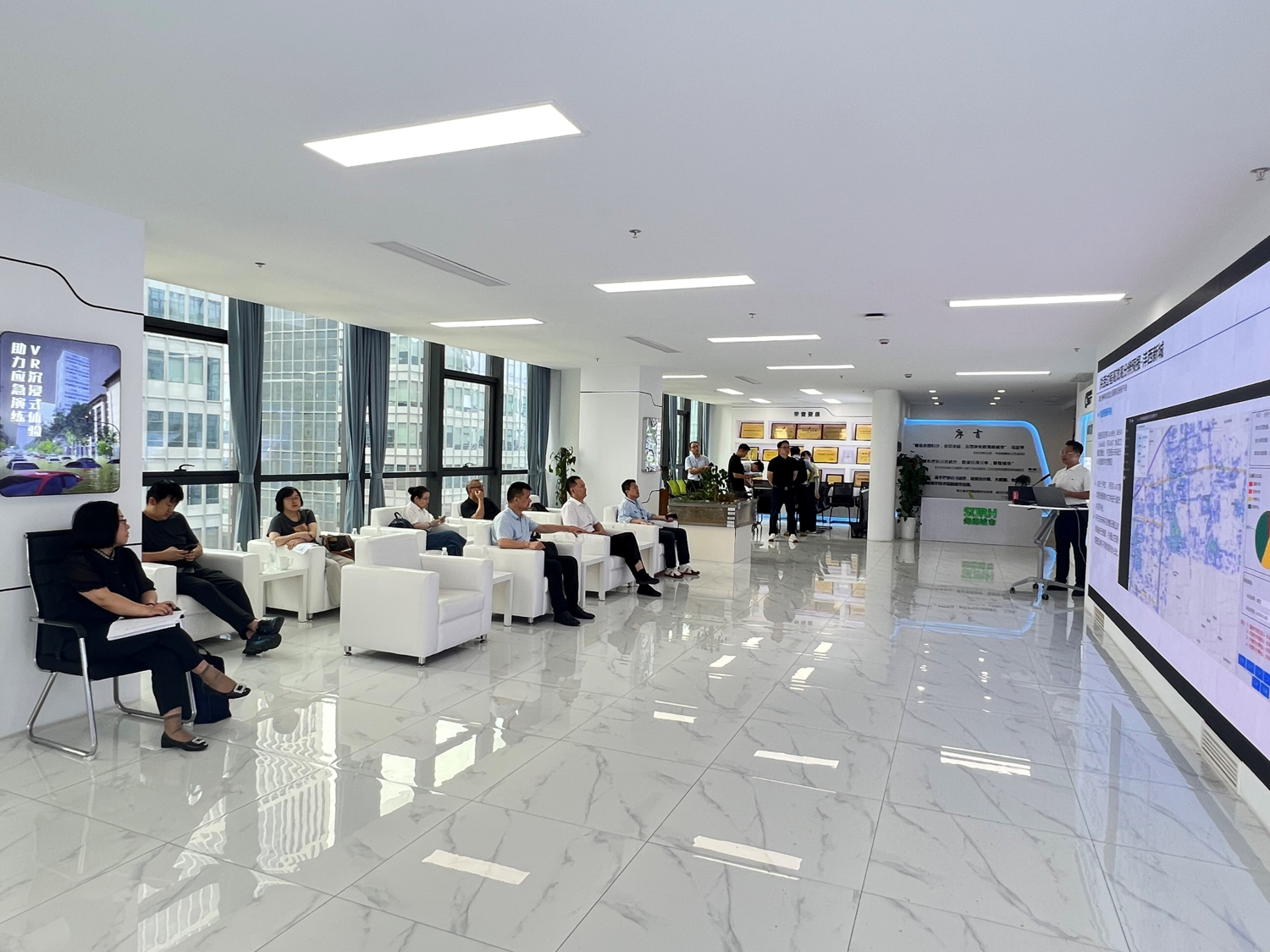27
25-06
Sponge city, turning rainwater into resources
Sponge city, turning rainwater into resources
In summer, after a heavy rain, there was no water accumulation on Xin Sen Avenue in Chongqing High-tech Zone, and the green belt was washed by the rain, making it more verdant.
On this road, bioretention facilities are combined with street trees. Through the comprehensive action of plants, soil, and microorganisms, rainwater is retained and purified, which improves the city's ability to prevent flooding.
The sponge facilities give the city both 'face' and 'lining'. In Chongqing, from road design to venue renovation, from community transformation to factory expansion, many projects have considered sponge city construction in their planning and have invested in and supported it.
In recent years, Chongqing has flexibly used measures such as 'infiltration, stagnation, storage, purification, use, and discharge' to complete 2,055 sponge city construction projects; there are currently 535 qualified drainage sub-districts, with a qualified area of 845.8 square kilometers, accounting for 46.2% of the built-up area of the city.
"Sponge cells": absorbing 70% of rainfall
After the rain, in the Xiantao International Big Data Valley in Yubei District, Chongqing, cars drove by, but there was no splash of water on the road. Where did the rain go?
By the side of the road, there is a gap every few meters. Rainwater flows along the gap to the rain garden on the side of the road. The filtered rainwater flows out of the pipeline and finally converges into the downstream river and lake water.
Rain gardens are typical 'sponge cells'. In a sunken area, Huang Mengxuan, deputy minister of the Safety and Municipal Department of Xiantao Data Valley Company, introduced with drawings: 'We are going to build a rain garden here. Relying on shallow green space, it will collect, store, infiltrate, and purify rainwater, which will help conserve urban groundwater and replenish the landscape.'
In the Chongqing Central Park Rain Garden Demonstration Base, Chen Rurong, the person in charge of the Sponge Office of the Yubei District Housing and Urban-Rural Construction Committee, introduced that a set of rain garden construction plans that can be promoted has been formed through relevant research: 'On rainy days, some rainwater seeps into the ground and is filtered by the plants and soil in the garden to remove impurities and replenish the groundwater; the other part of the rainwater that does not have time to seep into the ground enters the underground reservoir through the overflow well, is temporarily stored, and is then used to backfill the plants on sunny days.'
"Rain gardens are suitable for planting water-tolerant plants such as cattails and loosestrife in low-lying areas; in gentle slopes, you can plant plants that adapt to alternating wet and dry conditions, such as pennisetum and coneflowers. They all have the effect of retaining rainwater," said Huang Mengxuan.
The underground structure of the rain garden includes a water storage layer, planting soil, and permeable geotextile, and a drainage layer is also required. In the Big Data Valley, rainwater flowing through the rain garden will converge into Yunhu Lake. As a large-scale sponge facility in the Big Data Valley Park, Yunhu Lake has a storage capacity of approximately 4,000 cubic meters. Together with the source emission reduction project and the process control project, it constitutes a rainwater runoff control system, which can realize the total rainwater runoff control in an area of approximately 200,000 square meters.
In Yubei District, there are many sponge cells similar to rain gardens: permeable bricks are laid on sidewalks; in parks, there are rainbow runways built with permeable concrete; on both sides of roads, bioretention strips can delay peak rainwater runoff, intercept pollution through plant roots, and promote rainwater infiltration.
The 'sponge cells' converge into sponge areas where rainwater is naturally absorbed, runoff pollution is effectively reduced, and local heat island effects are alleviated. 'This sponge city allows 70% of the rainfall to be absorbed locally, which greatly reduces the drainage pressure on the underground pipe network,' said Chen Rurong.
Sponge venues: renovation adapted to local conditions
"Quick! Quick!" "Good ball!" In the Datianwan National Fitness Center in Chongqing, a football match is in progress in the rain, and the audience is wearing raincoats and is in high spirits. The rainwater falling on the field continuously pours into the side ditch of the stadium, and then converges into the drainage pipe through the underground pipe network, and finally concentrates into the rainwater reuse system.
As the main building of the fitness center, Datianwan Stadium was built in the 1950s, and it was difficult to fully consider the problem of absorbing rainwater at the beginning of the design. Qin Maosen, an engineer at the fitness center, introduced that in 2020, the fitness center launched a renovation and upgrading project, and Datianwan Stadium became the focus of construction. 'The stadium also had a drainage system before, but its function was limited, and it could only directly drain the rainwater away, and there was no way to collect it for reuse,' Qin Maosen said. A major highlight of this renovation is the construction of a new rainwater reuse system for the stadium.
In the location of the rainwater reuse system, a huge water tank collects rainwater from the past two days. 'There is enough water to flush the site and the toilet,' said Wu Xiaolei, an engineer from China Construction Eighth Bureau Southwest Installation Company.
During the renovation process, the construction team was also thinking: In addition to adding sponge facilities such as permeable pavement and rain gardens, what other spaces and potential can be tapped? After research and discussion, they turned their attention to the indoor venues around the open-air stadium. The construction personnel planted green plants on the roofs of the indoor venues in accordance with local conditions, creating a green area of more than 3,000 square meters.
"Green plants can store rainwater and achieve staggered peak consumption." Yang Hong, deputy director of Datianwan National Fitness Center, introduced that the rainwater filtered by green plants will eventually converge into the rainwater pipe network of the sponge city for further utilization.
In recent years, the Chongqing Municipal Housing and Construction Committee has carried out sponge city construction activities in old venues and communities, and has carried out renovations according to local conditions and in accordance with the terrain, landforms, and architectural characteristics, making use of various spaces such as height and size, so that 'sponge cells' can show their abilities.
Sponge Factory: Innovative Construction Ideas
As a manufacturing center, Chongqing has many factories. How can factories be transformed into 'sponges'?
Chongqing Kangpu Chemical Industry Co., Ltd. has been rooted in Changshou District, where factories gather, for many years. Xu Zhigang, the company's executive deputy general manager, introduced that the old factory area originally had no sponge facilities: 'When it rained heavily, employees got their shoes wet when they went to and from work, and they had to slow down when driving in and out, otherwise they would get splashed with water.'
The company is going to renovate and expand the old factory area, and Changshou District is also promoting the 'sponge' transformation of the factory. Therefore, the staff of the District Housing and Construction Committee came to the door to mobilize: 'Building a sponge factory will not cost too much. Collecting rainwater for reuse can also save money. Without standing water and with greening, it will be more comfortable and convenient for us to go to work and transport goods, and it will also look decent to outside customers, right?'
Once the idea is clear, action follows immediately. Around the factory buildings, 14 rain gardens were built. Tan Chenglin, the project leader of Chongqing Chemical Design and Research Institute Co., Ltd., introduced that considering the different structures of factories, residential areas, and parks, the factory's rain gardens also have an added impermeable membrane to prevent rainwater from eroding the factory's building foundation soil.
"Now, there is no water accumulation when it rains, and employees don't have to roll up their trousers," said Xu Zhigang.
In Liangping District, there are also innovations in the construction of sponge factories. According to relevant officials from the Liangping District Housing and Urban-Rural Development Commission, they came up with the idea of focusing on parking lots, organically integrating rain gardens with parking lot landscapes. This not only achieves rainwater runoff control but also creates new recreational scenarios for factory employees, combining aesthetics and functionality. The creation of sponge factories is beneficial for the long-term development of factories and also adds to the construction of sponge cities.
It is reported that Chongqing will continue to carry out sponge city construction work according to local conditions, combining pipeline network transformation, urban renewal, and other work, and using technologies such as the Internet of Things and big data. "In addition, we must cultivate a 'sponge industry chain' and support local enterprises to develop sponge technologies and products suitable for mountain cities." Relevant officials from the Chongqing Municipal Commission of Housing and Urban-Rural Development said that they will take multiple measures to create a more livable and smarter city of mountains and rivers for citizens in the future.
Excerpted from People's Daily, 2025.06.27, Reporter Chang Bilo
Related News
Related News


